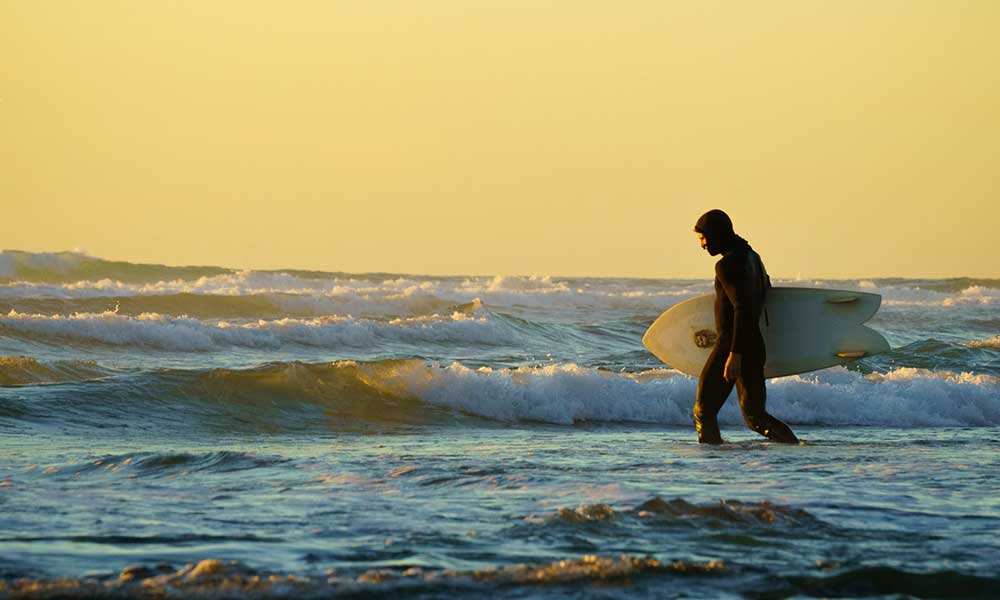As the name suggests, a twin fin surfboard setup utilizes two fins.
These fins allow for sharper turns than you get with single fins and they don’t create as much drag as thruster and quad fin setups.
How Do You Surf a Twin Fin on a Surfboard?
The twin fin setup has been used on many surfboard designs over the years.
One of the most popular is the fishtail, which is so-named because it has a fish-shaped tail.
To surf a twin fin surfboard, remember these simple lessons:
- Cruise: Spend some timing cruising the line and don’t try anything too fancy. If you’re switching from a thruster or a single fin setup, it will feel very different and it’s best to take your time.
- Turn: Stay low on the board when you are turning but stand tall when you are cruising.
- Don’t Lean In: Take it easy when you are making turns and don’t throw yourself into the turn. Ease into it and see how the board responds, as it won’t hold you as well and you may wipeout when you try to move too quickly.
- Watch and Learn: Spend some watching surfers ride a twin fin on YouTube. Just do a quick search for “twin fin surfing” or even “how to surf a twin fin” and watch them on the waves. It’s not as good as being there yourself, as most of the differences are slight and you need to feel them for yourself, but it will help to prepare you.
Are Twin Fins Faster Than Thrusters?
Yes, twin fins have less drag due to the lack of a center fin.
As a result, a twin fin surfboard can reach higher speeds.
Are Twin Fin Surfboards Good?
Of course! In fact, many surfers prefer twin fins over all other setups when it comes to surfing small to medium waves.
They provide a lot of speed and drive and allow for great transitions and carves.
All fin setups have their merits and twin fins are no exception, but it really depends on what board you’re riding and what the waves are like.
For instance, big wave surfers turn to opt for thrusters or quads to give them both drive and hold.
How Do You Setup Twin Fins?
Twin fins can be positioned anywhere from 5″ to 10 1/2″ from the tail.
It depends on the size of the fins and how you want the surfboard to respond.
The further back the fins are, the more drive it will have.
The higher up the fins are, The looser the twinny will be.







